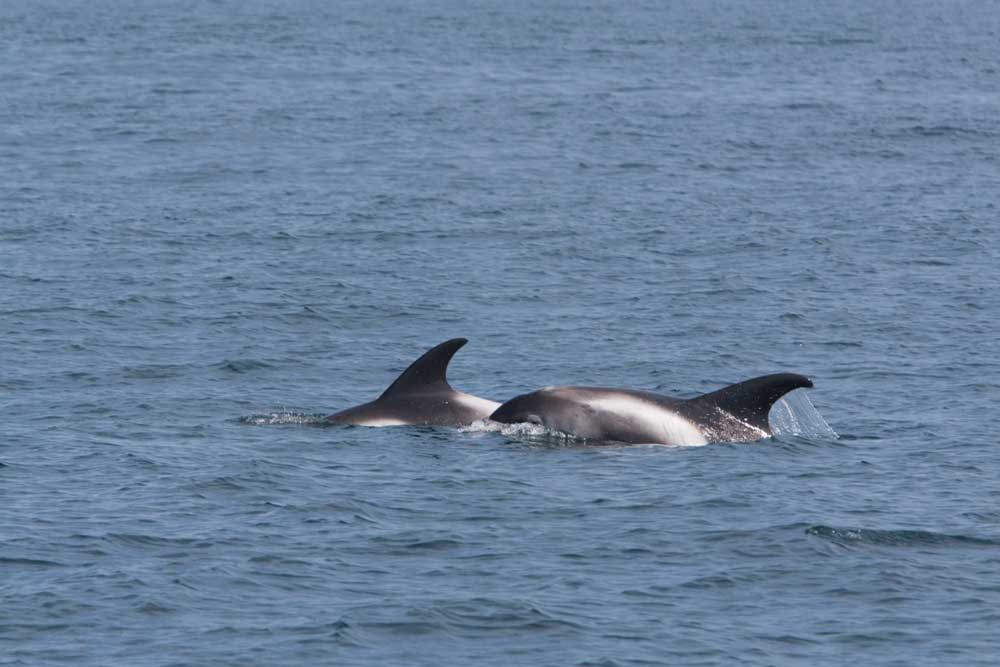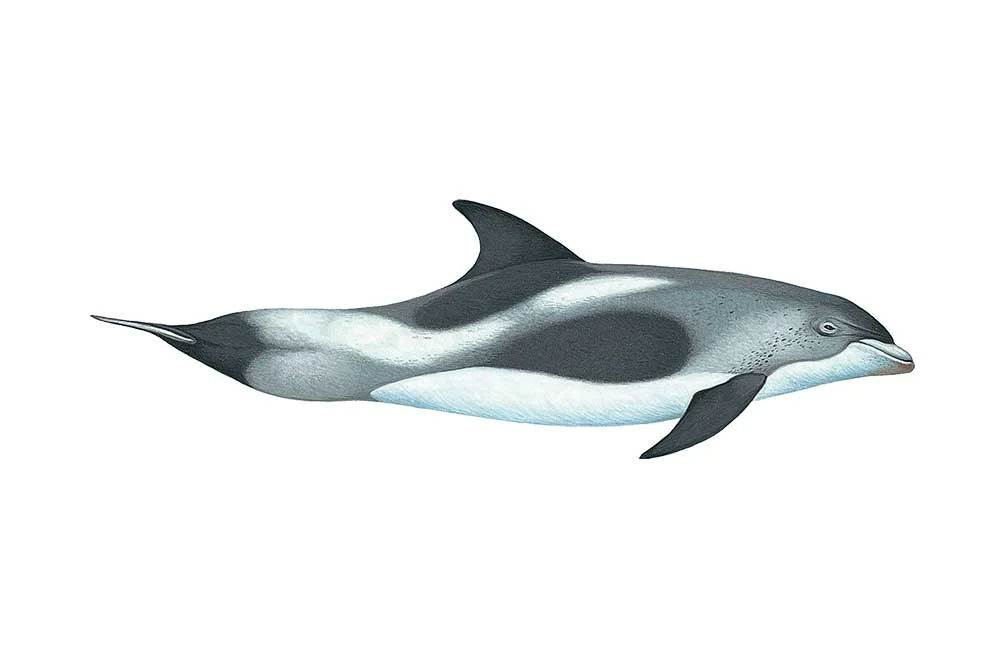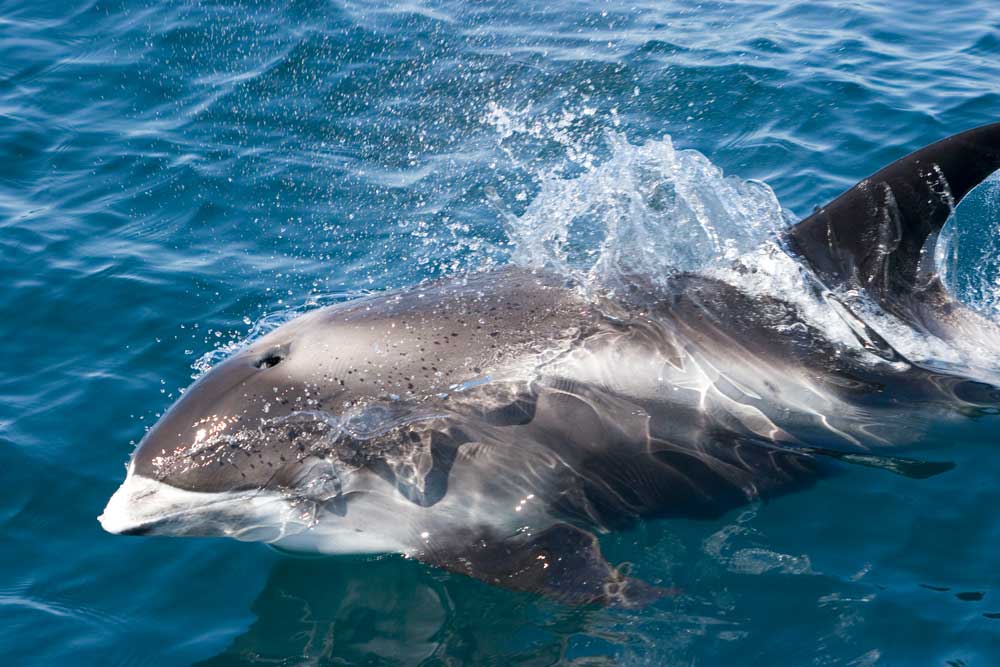
Latin: Lagenorhynchus albirostris
Gaelic: Leumadair bàn-ghobach
CETACEAN FACTFILE:
Months: January – December
Length: Up to 3.1 metres
Range: Temperate and subarctic waters of the North Atlantic
Threats: Accidental capture in fishing gear, climate change, pollution
Diet: Variety of fish, squid and crustaceans
PHYSICAL DESCRIPTION
White-beaked dolphins are sturdy, robust-bodied animals that can reach 3.1 metres in length and weigh up to 350 kg when fully grown. They have a dark grey back, tail and pectoral fins, with greyish-white flashes along the flanks and a pale grey patch behind the dorsal fin (known as the saddle-patch). The dark grey dorsal fin is tall and falcate (sickle shaped) and the beak is short and often entirely white.
BEHAVIOUR
White-beaked dolphins are fast, powerful swimmers that are attracted to boats in order to bow ride, where they will swim in the pressure wave at the front of a boat. They are quite acrobatic and frequently ‘porpoise’ (jump clear of the water) when travelling at speed. These dolphins are usually seen in small groups of five to 20 animals but occasionally form larger groups of several hundred individuals.
HABITAT AND DISTRIBUTION
The white-beaked dolphin is only found in the temperate and subarctic waters of the North Atlantic. In the Hebrides, they are usually seen in open waters further from the coast and seem to favour the waters around the outer Hebrides. Some research suggests that white-beaked dolphin numbers have declined in recent years, whilst common dolphin abundance has increased, which could mean the species are competing for habitat or food.
FOOD AND FORAGING
White-beaked dolphins have a varied diet of fish, ranging from small schooling fish such as sandeels and herring to larger bottom-dwelling fish including cod, whiting and haddock. They are also known to eat molluscs, squid, octopus and some crustaceans. These dolphins will work together when feeding using whistles, tail slaps and leaps to coordinate their hunt, and they may also associate with feeding minke whales and humpback whales.
STATUS AND CONSERVATION
One of the major threats to white-beaked dolphins is incidental capture and drowning in gillnet, driftnet and trawl fisheries. Rising sea temperatures caused by climate change may affect the future distribution of white-beaked dolphins in our waters because the UK shores represent the southern limit of their distribution. In addition to these threats, like other cetacean species, the white-beaked dolphin is affected by marine pollution, habitat degradation and disturbance caused by boating activities.
White-Beaked Dolphin Hotspot Map





